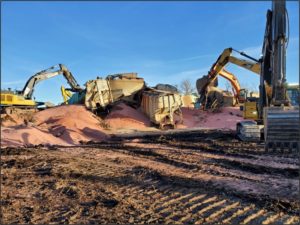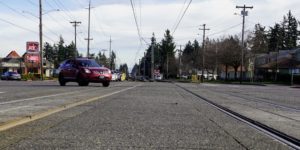Opinion: What’s up with the FRA?
Written by David C. Lester, Editor-in-Chief
Why has the Federal Railroad Administration put the brakes on automated track inspection testing?
As readers of RT&S know well, the advancement of technology has been critical to the industry’s fortunes since trains began operating in North America in the early 1800s. From iron-strapped rails, lightweight locomotives, crude traffic control, little or no roadbed, and many accidents that killed railroad workers and pedestrians, modern railroad operation is almost unrecognizable compared to the early efforts. The transition from steam to diesel was a massive milestone for the industry, just as the development of the microprocessor and flood of digital technology have been in recent years.
BNSF, Norfolk Southern, CSX, Canadian Pacific, and Canadian National all received approval from the FRA to implement ATI test programs in 2018. Roads built test programs with plans to reduce the required visual inspections and add ATI inspections to the existing program. In other words, the FRA granted these roads a “waiver” for performing the current number of visual track inspections and adding automated inspections.
When roads announced these programs, they received some pushback from a rail union that sued the FRA. Interestingly, the FRA successfully defended the approval in federal court, and the test programs were allowed to proceed. And these programs have been quite successful.
Nevertheless, railroads ran into choppy air in 2021 when they applied for extensions to the waiver. For example, BNSF was granted a five-year waiver for testing on two subdivisions, which remains in effect. It applied to expand the waiver last year to include additional subdivisions on its network. In addition, Norfolk Southern applied for a waiver to allow for blending visual inspections with ATI inspections. The FRA denied both requests.
The question is, why? Mike Rush, senior vice president for safety and operations at the Association of American Railroads, told RT&S, “I haven’t seen a reasonable explanation from anyone as to why the FRA is delaying the progression of ATI.” Rush added that “the railroads don’t want to eliminate visual inspections, but are trying to find the right mix of automated and visual inspections to ensure maximum safety. And, there are some things that a visual inspection can detect that ATI cannot, such as overgrown vegetation over, around, or above the track.”
To refine the capability and quality of ATI, the railroads must continue the testing programs. As mentioned earlier, the results, so far, have been very impressive. Rush said that “the quality of the equipment and inspections conducted by properly equipped locomotives and freight cars is no different from those provided by the geometry car.” Again, the huge advantage of the equipment mounted on freight trains is the large increase in mileage inspected each year, which should considerably reduce the number of track-related accidents.
I believe this issue hinges in part on the ongoing resistance to technology that may reduce the need for rail employees, to which unions naturally object. This is not new. Readers may recall when diesels rapidly replaced steam engines in the 1940s and ’50s and significantly reduced the number of employees needed to maintain and operate locomotives. Indeed, union negotiations resulted in retaining the fireman’s position on a locomotive crew in the diesel age. On steam engines, the fireman must maintain the proper amount of coal in the firebox to maintain the right level of steam pressure. Diesels did not require this position, but the railroads held the fireman’s job.
So, if labor concerns over the loss of jobs are causing the FRA to impede the progress of ATI, that’s not acceptable. The roads need to test and refine this technology to provide a track inspection and safety level unmatched in the industry’s history. Nevertheless, I am certainly sensitive to the concern of job security on the part of rail labor. Despite the current worker shortages in most industries, job insecurity permeates nearly every sector of our economy.
Here’s something for both railroads and labor to consider – if the railroads aren’t running trains and embargoing traffic because of the shortage of qualified crews, can there not be increased focus on filling these shortages internally? Can some visual track inspectors not be trained to be members of train crews or assume another role at the company? I understand moving from the position of a track inspector to a locomotive engineer could be an extreme adjustment for some folks, but I would think other opportunities would exist. Is it necessarily a job one would prefer? Maybe not, but isn’t that better than losing your job altogether?
Maybe rail labor could drop its objections to increasing ATI. Maybe the railroads could drop the objection to two-person crews. I know these are red-hot, contentious issues, and addressing them is not as simple as I make it sound. However, as we continue to rely on technological advances to improve our lives and reduce costs, the spoils of this progress should be shared equally by management and labor. This continued business of massive salaries and bonuses going into the pockets of executives while rail labor and lower-level white-collar workers, even though their salaries are above the national average, don’t share in the increased benefits and earnings of success, is not sustainable. It’s time for the industry to get the cobwebs out of its collective brains, focus on working together, and get some work done.
It’s also time for the FRA to discontinue the ridiculous impediments to ATI testing and move the industry forward.
Read more articles about track maintenance.
For brief news updates and commentary, please follow me on Twitter @davidclesterRTS





